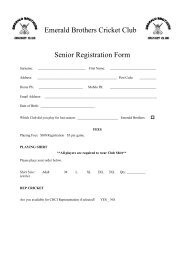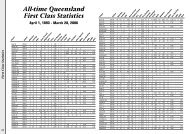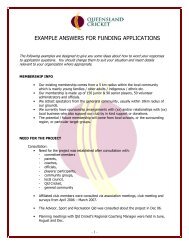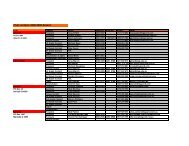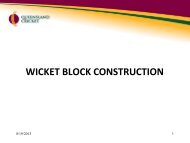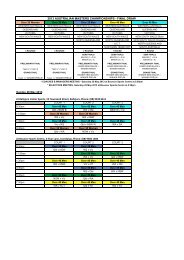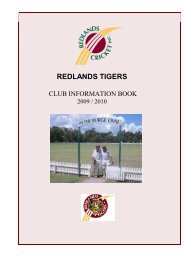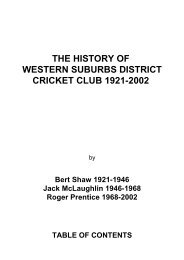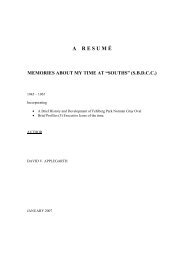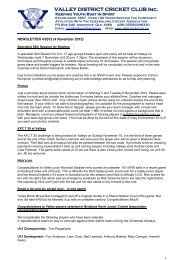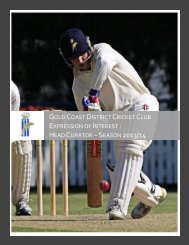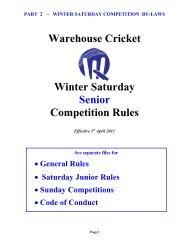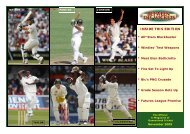QCSA Handbook on scoring 2010 - Queensland Cricket
QCSA Handbook on scoring 2010 - Queensland Cricket
QCSA Handbook on scoring 2010 - Queensland Cricket
- No tags were found...
Create successful ePaper yourself
Turn your PDF publications into a flip-book with our unique Google optimized e-Paper software.
• The umpire will always signal the start of a discreti<strong>on</strong>ary power play.Be watching for this signal, as it may come unexpectedly.• Once a power play has been called it cannot be reversed.• These discreti<strong>on</strong>ary power plays generally each comprise half thenumber of overs played in the automatic power play overs (e.g. 5 perside in a 50 over innings, 4 per side in a 40 over innings).• If there is an uneven number of overs available for power plays, thenthe fielding side will have the greater number (e.g. in a 45 overinnings, 5 overs will be available for the fielding side and 4 overs forthe batting side).• A power play will become compulsory and will be called by theumpire if it has not been taken and the number of overs of thepower play equals the remaining overs of the innings (e.g. in a 50over innings, if the batting power play has not been taken by the endof over 45, the umpire will automatically call it for the remaining 5overs).• If the number of overs for the match are reduced due to stoppages,the number of overs for each power play will be reduced. Theumpires will make these calculati<strong>on</strong>s and you should check with theumpires for the revised number of overs for each power play.If you are <strong>scoring</strong> a limited overs match, you should check with the umpiresbefore the start of play to determine what power plays and fieldingrestricti<strong>on</strong>s are in force for your game.Generally, for a Twenty20 match there is <strong>on</strong>e power play of five overs.Handy hintAlthough discreti<strong>on</strong>ary power plays can be taken at any time after theautomatic power play, the fielding side will often take its power playimmediately after the automatic <strong>on</strong>e. So, for example, in a 50 overinnings, be watching for the signal from the umpire at the start of the11th over. It may not be called, but there’s a good chance it will.Substitute playersSome competiti<strong>on</strong>s have regulati<strong>on</strong>s that allow substituti<strong>on</strong> of players. Thisis not the same as having a substitute fielder (see page 15). Where a66<strong>Queensland</strong> <strong>Cricket</strong> Scorers Associati<strong>on</strong>



